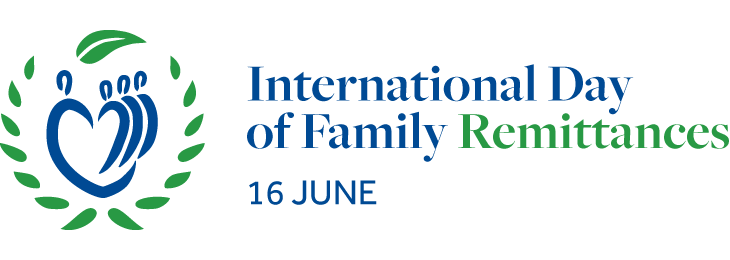
Remittances and the SDGs
#FamilyRemittancesThe campaign #FamilyRemittances2030 – Supporting one billion people reach their own SDGs, aims to recognize the fundamental contribution of migrant families towards the achievement of their own Sustainable Development Goals.
The campaign encourages all actors engaged in the remittance market to acknowledge and act upon opportunities and best practices that can contribute to achieving the SDGs, and particularly SDG 10.c and Objective 20 of the Global Compact for Safe, Orderly and Regular Migration (GCM).
The campaign’s goals are to:
- promote a more comprehensive understanding of the key role that family remittances play on sustainable development;
- create an enabling environment for unleashing the potential of these flows for the wellbeing of migrants’ communities; and
- enhance financial inclusion for migrants and their families through increased access to – and use of – financial services, particularly in remote, rural areas.
The #FamilyRemittances2030 campaign highlights the contribution of remittances towards the achievement of the SDGs, presenting recommended strategies which the public and private sectors, and the civil society could adopt and engage in.
Remittance families contribute to achieving SDGs
The SDGs provide a unique opportunity to create a convergence between the goals of remittance families, government development objectives, private sector strategies to tap underserved markets, and the traditional role of the civil society to promote positive change. In particular:
- Financial inclusion and literacy for remittance-recipient families can increase opportunities for formal savings and investment. In turn, these mechanisms can build the human capital of remittance families and improve their living standards through better education, health and housing.
- Migrant investments beyond remittances can change the development landscape of local communities, if given appropriate options.
- Improved remittance markets through an adapted legal and regulatory framework, as well as greater transparency and competition, can lower costs and provide additional resources to remittance families.
As private flows, migrant remittances do not in any way reduce or supplant the need for additional resources, both public and private. However, the potential development impact of migrant remittances and investments can only be fully realized in partnership with coherent and realistic public policies and priorities coupled with private sector initiatives.
The GCM is an opportunity to build on the growing recognition that the remittances sent by migrants to their families back home are fundamental for governments, international organizations and other partners in realizing their sustainable development objectives.
Remittances can contribute to reaching the SDGs in a variety of ways:
- At household level. By recognizing the positive socioeconomic impact of remittances on families’ wellbeing (SDGs 1, 2, 3, 4 and 5).
- At community level. By supporting policies and specific actions to promote synergies between remittances and financial inclusion, encourage market competition and regulatory reforms, and mitigate any negative impact resulting from climate change (SDGs 6, 7, 8, 10, 12 and 13).
- At international level. By ensuring that the revitalized Global Partnership for Sustainable Development – as outlined in SDG 17 – and the GCM promote collaboration across all sectors involved in remittances.


